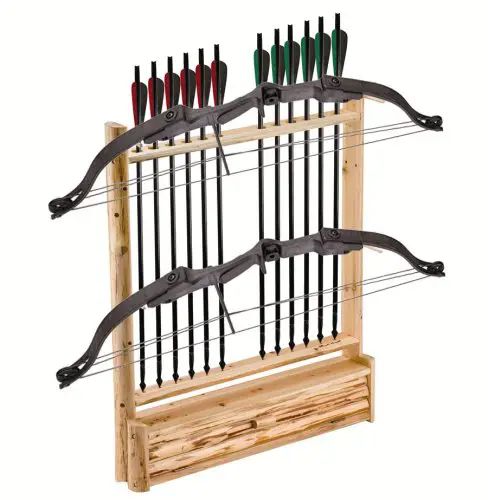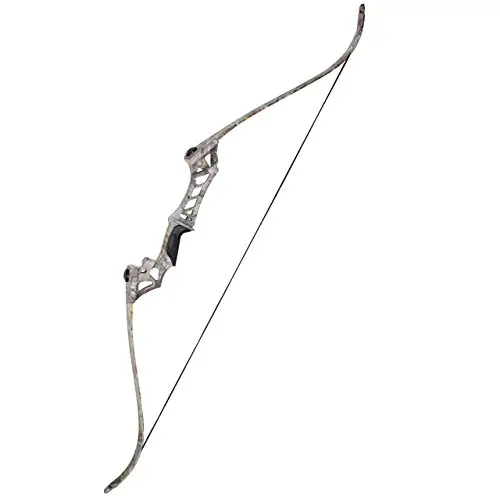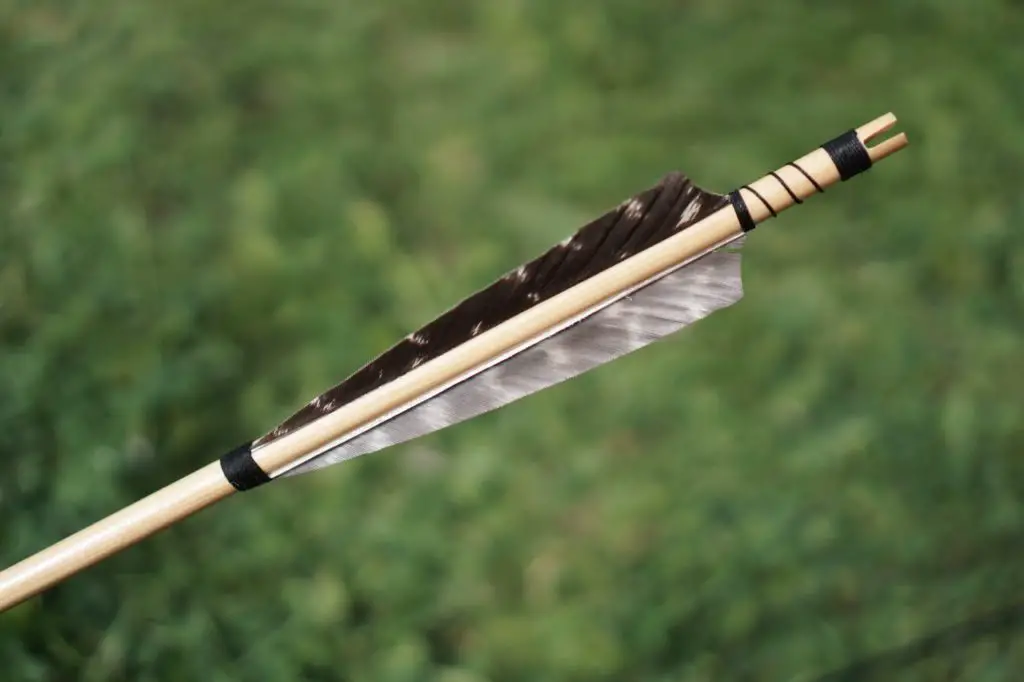Longbows and recurves are two popular options for hunters, each with their own unique advantages and disadvantages. In this article, we will explore the differences between longbows and recurves to help you make an informed decision on which bow is right for you.
Understanding the key features and specifications of longbows and recurves is essential to choosing the right bow for your needs.
Longbows have a traditional design with a simple, straight bow that is typically made from a single piece of wood. Recurve bows, on the other hand, have curved limbs that bend away from the archer when unstrung, allowing for a shorter bow length and easier maneuverability in tight spaces.
Both types of bows come in a range of draw weights and lengths, and can be made from a variety of materials such as wood, fiberglass, and carbon fiber.
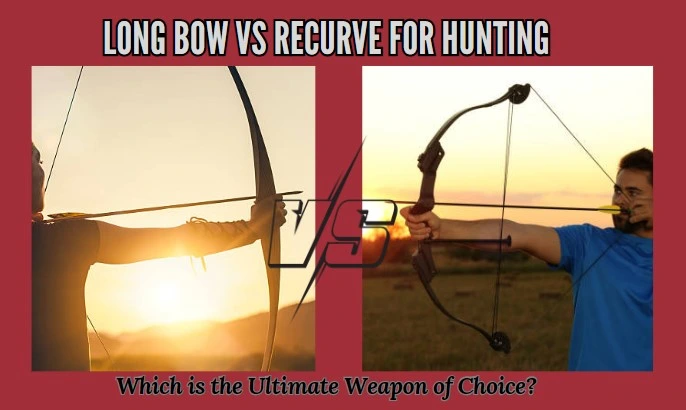
Key Takeaways
- Longbows and recurves are two popular options for hunters, each with their own unique advantages and disadvantages.
- Understanding the key features and specifications of longbows and recurves is essential to choosing the right bow for your needs.
- Longbows have a traditional design with a simple, straight bow, while recurve bows have curved limbs that bend away from the archer when unstrung.
| Aspect | Longbows | Recurve Bows |
|---|---|---|
| Design | Simple, straight, traditional | Curved limbs, more modern design |
| History | Used for centuries, single wood | Ancient roots, curved limbs |
| Construction | Typically single piece of wood | Various materials like wood, carbon, fiberglass |
| Size and Weight | Longer, lighter, beginner-friendly | Shorter, heavier, stability |
| Draw Weight and Length | Lower draw weight, longer draw | Higher draw weight, shorter draw |
| Speed and Accuracy | Slower, less accurate, forgiving | Faster, more accurate, challenging |
| Advantages | Quieter, forgiving, beginner-friendly | Precise, versatile, powerful |
| Disadvantages | Hand shock, limited versatility | Louder, challenging for beginners |
| Archery Techniques and Styles | Relatively easier to master | May require more training and practice |
| Bowhunting | Stealthy, good range and power | Stealthy, good range and power |
| Maintenance and Cost | Less expensive, more maintenance | More durable materials, less maintenance |
| Choosing the Right Bow | Suitable for beginners, less strength required | Requires more strength, versatile |
| Accessories and Equipment | Considerations for arrows, rests, quivers, sights, and protective gear | Same considerations for accessories and equipment |
Understanding Longbows and Recurves
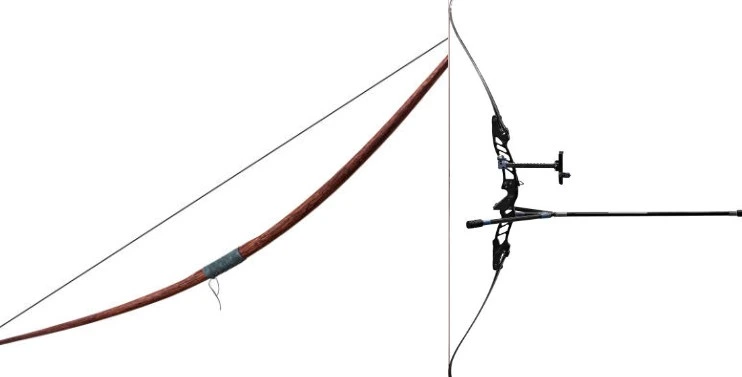
If you’re new to archery or hunting, you might be wondering what the difference is between a longbow and a recurve bow. Both are traditional designs that have been used for centuries, but they have some key differences that can affect their performance in the field. In this section, we’ll explore the history of longbows and recurves, their design and construction, and the different types of bows available.
History of Longbows and Recurves
Longbows have been used for hunting and warfare for thousands of years, dating back to ancient Asia and Europe. They were typically made from a single piece of wood, such as yew, and had long, straight limbs that gave them a distinctive shape. Longbows were used by the Welsh in the Middle Ages, and were later adopted by the English for their long-range accuracy and power.
Recurve bows, on the other hand, were developed more recently, although they still have a long history dating back to ancient Asia. The curved limbs of the recurve bow allow for a shorter overall length, making it easier to maneuver in tight spaces. Recurves also tend to be more powerful than longbows, thanks to their design.
Design and Construction
Longbows and recurve bows have different designs that affect their performance. Longbows have long, straight limbs that are wider at the handle and taper towards the tips. This design makes them more forgiving to shoot, as there is less torque on the bow when you draw it back. Longbows are also typically quieter than recurve bows, as there are fewer moving parts.
Recurve bows, on the other hand, have curved limbs that bend away from the archer when the bow is unstrung. This gives them more power than longbows, as the curved limbs store more energy when the bow is drawn back. Recurves are also more compact than longbows, making them easier to transport and store.
Types of Bows
There are many different types of longbows and recurve bows available, each with its own unique features and benefits. Traditional longbows are made from a single piece of wood and are popular with archers who prefer a more traditional design. Modern longbows may have laminated or composite limbs for added strength and durability.
Recurve bows may be traditional or modern, and may have limbs that can be removed for easy storage and transport. Some recurves are designed specifically for hunting, with shorter lengths and higher draw weights for added power and accuracy.
No matter which type of bow you choose, it’s important to practice regularly and become familiar with your equipment before heading out into the field. With the right bow and plenty of practice, you’ll be well on your way to becoming a skilled archer and successful hunter.
Key Features and Specifications
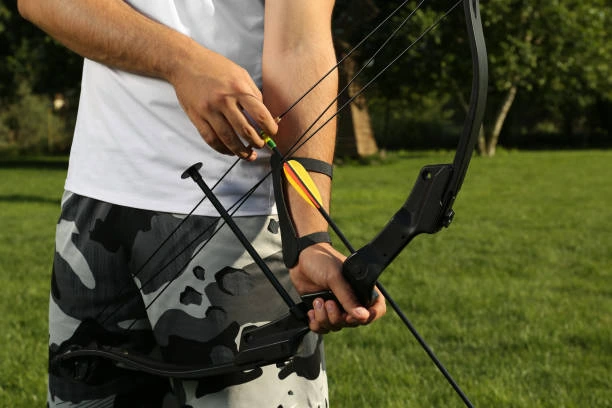
When it comes to choosing between a longbow and a recurve bow for hunting, there are several key features and specifications to consider. In this section, we will cover the size and weight, draw weight and length, as well as speed and accuracy of longbows and recurve bows.
Size and Weight
One of the main differences between longbows and recurve bows is their size and weight. Longbows tend to be longer and simpler in design, which makes them more forgiving and easier for beginners to use. They are also generally lighter in weight, which makes them easier to carry around in the field.
On the other hand, recurve bows have limbs that curve away from the archer when unstrung, which allows for a shorter bow length. This design makes them more maneuverable in tight spaces. They are also generally heavier in weight, which can make them more stable and easier to shoot accurately.
Draw Weight and Length
Another important consideration when choosing between a longbow and a recurve bow is the draw weight and length. The draw weight is the amount of force required to pull the bowstring back to its full draw length, while the draw length is the distance between the bow grip and the bowstring when it is at full draw.
Longbows tend to have a lower draw weight and longer draw length than recurve bows, which makes them easier on the archer’s fingers and joints. They also tend to shoot more quietly than recurve bows. However, they may not be as good for bowhunting, as they require a higher draw weight to be effective.
Recurve bows, on the other hand, have a higher draw weight and shorter draw length than longbows. This makes them more powerful and accurate, but also more challenging to shoot. They are also the only type of bow allowed in Olympic competitions.
Speed and Accuracy
Finally, the speed and accuracy of longbows and recurve bows are important factors to consider when choosing a hunting bow. Longbows tend to be slower and less accurate than recurve bows, but they are also more forgiving and easier to shoot. Recurve bows, on the other hand, are faster and more accurate, but also more challenging to shoot.
Overall, the choice between a longbow and a recurve bow for hunting will depend on your personal preferences and skill level. Both types of bows have their own unique advantages and disadvantages, so it’s important to choose the one that best suits your needs and abilities.
Advantages and Disadvantages

When it comes to choosing between a longbow and a recurve bow for hunting, there are several factors to consider. Both types of bows have their advantages and disadvantages, and it’s important to know what these are before making a decision.
Longbow Pros and Cons
Pros
- Forgiving: Longbows are generally more forgiving than recurve bows, meaning they are easier to shoot accurately. This is because they have a longer brace height, which gives the arrow more time to stabilize before it is released.
- Quiet: Longbows tend to shoot more quietly than recurve bows, making them a good choice for hunting situations where noise is a concern.
- Beginner-Friendly: Longbows are generally easier for beginners to use than recurve bows. They tend to be more forgiving of mistakes in form and technique, and they don’t require as much strength to shoot.
Cons
- Hand Shock: Longbows can have more hand shock on the bow hand than recurve bows. This can be uncomfortable for some shooters and may even cause injury if not properly managed.
- Draw Weight: Longbows generally require a higher draw weight than recurve bows to achieve the same level of performance. This can make them more difficult to shoot for some people, especially those with less upper body strength.
- Limited Versatility: Longbows are generally less versatile than recurve bows. They are designed for shooting at longer distances and are less effective at shorter ranges.
Recurve Pros and Cons
Pros
- Precision: Recurve bows are known for their precision and accuracy. They are designed to shoot arrows at high speeds with a high degree of accuracy, making them a good choice for hunting situations where accuracy is important.
- Forgiveness: While recurve bows are generally less forgiving than longbows, they still offer a good degree of forgiveness. This means that they are easier to shoot accurately than some other types of bows.
- Versatility: Recurve bows are known for their versatility. They can be used for a variety of different types of hunting and shooting, and they can be easily customized to fit the shooter’s needs.
Cons
- Portability: Recurve bows tend to be longer and bulkier than longbows, making them less portable and more difficult to maneuver in tight hunting spots.
- Noise: Recurve bows tend to be louder than longbows, making them less suitable for hunting situations where noise is a concern.
- Beginner-Unfriendly: Recurve bows can be more difficult for beginners to use than longbows. They require more strength and technique to shoot accurately, and mistakes in form and technique can have a greater impact on accuracy.
Archery Techniques and Styles
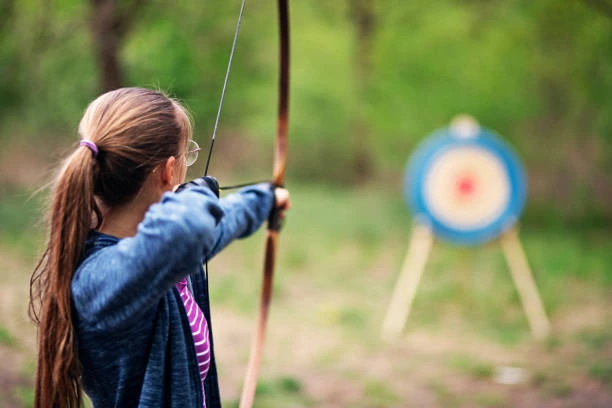
Are you new to archery and not sure where to start? Or are you an experienced archer looking to improve your skills? Regardless of your experience level, it’s important to have a solid understanding of the various techniques and styles used in archery. In this section, we’ll cover the basics of shooting form and stance, aiming and anchoring, and drawing techniques for both longbows and recurve bows.
Shooting Form and Stance
Having proper shooting form and stance is crucial for accuracy and consistency in archery. When shooting a longbow or recurve bow, it’s important to stand with your feet shoulder-width apart and perpendicular to the target. Keep your weight evenly distributed between both feet and your knees slightly bent. Your upper body should be relaxed and your shoulders level.
When holding the bow, grip it firmly but not too tightly. Your bow arm should be straight and your elbow should be rotated slightly outward. Your drawing hand should be positioned at the corner of your mouth, with your fingers wrapped around the bowstring.
Aiming and Anchoring
Aiming and anchoring are also important aspects of archery. When aiming, it’s important to keep both eyes open and focus on the target. Many archers use a sight or other aiming aids to help with accuracy. When anchoring, your drawing hand should be positioned consistently at the same spot on your face, such as the corner of your mouth or the tip of your nose. This helps ensure consistency in your shots.
Drawing Techniques
Drawing the bow is another important aspect of archery. With a longbow, the draw length is typically longer than with a recurve bow. This means that you’ll need to pull the bowstring back farther in order to achieve the same amount of power. With a recurve bow, you can adjust the draw weight by changing out the limbs, making it a more versatile option for archers of different strengths.
When drawing the bow, it’s important to use your back muscles rather than your arm muscles. This helps ensure a smooth and consistent draw. Additionally, make sure to keep your elbow pointed downward and your wrist straight.
By mastering these archery techniques and styles, you’ll be well on your way to becoming a skilled archer. Remember to practice regularly and focus on proper form and technique for the best results.
Bowhunting with Longbows and Recurves
Are you looking for a traditional way to hunt that will test your skills and patience? Longbows and recurves are great options for bowhunting. In this section, we’ll cover the advantages and disadvantages of each type of bow, so you can make an informed decision.
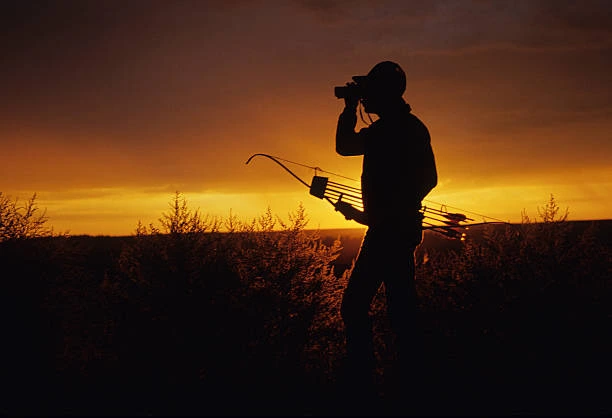
Stealth and Quietness
One of the biggest advantages of longbows and recurves is their quietness. Unlike compound bows, they don’t have any mechanical parts that can make noise. This makes them ideal for bowhunting, where you need to be stealthy and avoid spooking your prey.
Range and Power
Longbows and recurves are also known for their power and range. They can shoot arrows at high speeds and over long distances, making them ideal for hunting larger game. However, keep in mind that you’ll need to have good aim and be able to shoot accurately at longer distances.
Portability and Transport
Another advantage of longbows and recurves is their portability. They’re lightweight and easy to carry, which makes them ideal for hunting in remote areas. You can easily pack them in a backpack or carry them in a case, so you don’t have to worry about them taking up too much space.
When it comes to transport, longbows and recurves are also easier to transport than compound bows. They don’t have any mechanical parts that can get damaged during transport, so you don’t have to worry about them getting damaged in transit.
In conclusion, longbows and recurves are great options for bowhunting. They’re quiet, powerful, and easy to transport, which makes them ideal for hunting in remote areas. Whether you choose a longbow or a recurve, you’re sure to have an exciting and challenging hunting experience.
Maintenance and Cost
When it comes to choosing between a longbow and a recurve bow for hunting, maintenance and cost are two important factors to consider. In this section, we’ll discuss the material and durability of both types of bows, their maintenance requirements, and a price comparison between the two.
Material and Durability
Longbows are typically made from wood, while recurve bows can be made from a variety of materials, including wood, carbon, and fiberglass. Wood is a traditional material for both types of bows, but it can be prone to warping and cracking if not properly maintained. Carbon and fiberglass are more durable materials that are less susceptible to damage, making them a good choice for hunters who want a bow that can withstand the rigors of the outdoors.
Maintenance Requirements
Both longbows and recurve bows require regular maintenance to ensure they perform at their best. Longbows made from wood need to be kept dry and protected from extreme temperatures to prevent warping and cracking. Recurve bows made from carbon or fiberglass are more durable and require less maintenance, but they still need to be kept clean and dry to prevent damage.
To maintain your bow, you should regularly inspect it for any signs of damage, such as cracks or warping. You should also clean your bow after each use to remove any dirt or debris that may have accumulated on it. Finally, you should store your bow in a dry, cool place to prevent damage from moisture or extreme temperatures.
Price Comparison
When it comes to cost, longbows are generally less expensive than recurve bows. This is because they are made from simpler materials and have a less complex design. Recurve bows, on the other hand, can be made from a variety of materials and have a more complex design, which makes them more expensive.
Overall, both longbows and recurve bows are great choices for hunting, and the decision between the two ultimately comes down to personal preference. If you’re looking for a more traditional bow that requires a little more maintenance, a longbow may be the right choice for you. If you want a more durable bow that requires less maintenance, a recurve bow made from carbon or fiberglass may be the better choice.
Choosing the Right Bow for You
When it comes to hunting with a bow, choosing the right one can make all the difference in your success. There are many factors to consider when deciding between a long bow and a recurve bow. Here are a few things to keep in mind to help you make the right choice for your needs.
Personal Preference and Skill Level
One of the most important factors to consider when choosing a bow is your personal preference and skill level. Some hunters prefer the simplicity and traditional feel of a long bow, while others prefer the power and versatility of a recurve bow. If you are just starting out, a long bow may be a good choice as it is generally easier to use and requires less skill to shoot accurately. However, if you are an experienced archer, a recurve bow may be a better choice as it offers more power and accuracy.
Versatility and Adaptability
Another important factor to consider is the versatility and adaptability of the bow. A recurve bow can be adjusted to different draw weights and lengths, making it a more versatile option for different hunting situations. A long bow, on the other hand, is typically designed for a specific draw weight and length, making it less adaptable to different hunting scenarios. If you plan on hunting in a variety of situations, a recurve bow may be a better choice.
Practice and Training
Finally, it is important to consider the amount of practice and training you are willing to put in. Both long bows and recurve bows require practice and skill to shoot accurately, but a recurve bow may require more training and practice due to its greater power and versatility. If you are willing to put in the time and effort to master a recurve bow, it can be a very effective hunting tool. However, if you are looking for a simpler, more traditional option, a long bow may be the way to go.
In conclusion, choosing between a long bow and a recurve bow depends on your personal preference, skill level, versatility needs, and willingness to practice and train. By considering these factors, you can choose the best bow for your hunting needs and increase your chances of success in the field.
Accessories and Equipment
When it comes to hunting with a longbow or recurve, having the right accessories and equipment is crucial. In this section, we’ll cover the various arrow types and rests, quivers and sights, and other essential accessories that you’ll need to consider.
Arrow Types and Rests
One of the most important accessories for your longbow or recurve is the arrow. There are several types of arrows available, each with its own set of advantages and disadvantages. Some of the most popular arrow types include wood, carbon, and aluminum.
In addition to choosing the right arrow, you’ll also need to select the right arrow rest. The arrow rest is the part of the bow that the arrow sits on when it’s loaded. There are several types of arrow rests available, including the shoot-through rest, the drop-away rest, and the containment rest.
Quivers and Sights
Another important accessory for your longbow or recurve is the quiver. A quiver is a device that holds your arrows when you’re not using them. There are several types of quivers available, including hip quivers, back quivers, and bow-mounted quivers.
Sights are also an important accessory for your longbow or recurve. A sight is a device that helps you aim your bow more accurately. There are several types of sights available, including fixed pin sights, adjustable pin sights, and single pin sights.
Other Essential Accessories
Finally, there are several other essential accessories that you’ll need to consider when hunting with a longbow or recurve. These include:
- Arm guards: Arm guards protect your forearm from the bowstring when you release the arrow.
- Finger tabs or gloves: Finger tabs or gloves protect your fingers from the bowstring when you release the arrow.
- Broadheads: Broadheads are the tips of your arrows and are designed to penetrate the animal you’re hunting.
- Bowstring wax: Bowstring wax helps protect your bowstring from wear and tear.
Overall, choosing the right accessories and equipment is essential when hunting with a longbow or recurve. By selecting the right arrow types and rests, quivers and sights, and other essential accessories, you can improve your accuracy and make your hunting experience more enjoyable.
Frequently Asked Questions
Which type of bow is best for hunting?
Deciding which type of bow is best for hunting ultimately depends on your personal preference and skill level. Both longbows and recurve bows have their advantages and disadvantages, so it’s important to consider your own needs and abilities before making a decision.
What are the differences between a longbow and a recurve bow?
Longbows are typically made from a single piece of wood and have a simpler design than recurve bows. Recurve bows, on the other hand, have limbs that curve away from the archer, allowing for greater power and accuracy. Recurve bows are also more compact and easier to transport than longbows.
What are the advantages of using a longbow for hunting?
Longbows are generally more forgiving and easier for beginners to use. They are also easier on the archer’s fingers and joints, and tend to shoot more quietly than recurve bows. Additionally, longbows have a traditional aesthetic that many hunters find appealing.
What are the advantages of using a recurve bow for hunting?
Recurve bows allow for greater power and accuracy than longbows, making them a popular choice among experienced hunters. They are also more compact and easier to transport, and can be adjusted to suit the archer’s needs. Additionally, recurve bows are often used in Olympic archery competitions, making them a versatile choice for hunters who also enjoy target shooting.
What are the disadvantages of using a longbow for hunting?
Longbows can have more hand shock on the bow hand, which can be uncomfortable or even painful for some hunters. They also have a shorter range than recurve bows, making them less effective for long-distance shots. Finally, longbows require a higher draw weight to be effective for hunting, which can be challenging for some archers.
What are the disadvantages of using a recurve bow for hunting?
Recurve bows can be more difficult for beginners to use, and may require more practice to master. They are also more expensive than longbows, and may require more maintenance. Finally, recurve bows may be less aesthetically pleasing to some hunters, as they have a more modern look than longbows.
Deciding which type of bow is best for hunting ultimately depends on your personal preference and skill level. Both longbows and recurve bows have their advantages and disadvantages, so it’s important to consider your own needs and abilities before making a decision.
“}},{“@type”:”Question”,”name”:”What are the differences between a longbow and a recurve bow?”,”acceptedAnswer”:{“@type”:”Answer”,”text”:”
Longbows are typically made from a single piece of wood and have a simpler design than recurve bows. Recurve bows, on the other hand, have limbs that curve away from the archer, allowing for greater power and accuracy. Recurve bows are also more compact and easier to transport than longbows.
“}},{“@type”:”Question”,”name”:”What are the advantages of using a longbow for hunting?”,”acceptedAnswer”:{“@type”:”Answer”,”text”:”
Longbows are generally more forgiving and easier for beginners to use. They are also easier on the archer’s fingers and joints, and tend to shoot more quietly than recurve bows. Additionally, longbows have a traditional aesthetic that many hunters find appealing.
“}},{“@type”:”Question”,”name”:”What are the advantages of using a recurve bow for hunting?”,”acceptedAnswer”:{“@type”:”Answer”,”text”:”
Recurve bows allow for greater power and accuracy than longbows, making them a popular choice among experienced hunters. They are also more compact and easier to transport, and can be adjusted to suit the archer’s needs. Additionally, recurve bows are often used in Olympic archery competitions, making them a versatile choice for hunters who also enjoy target shooting.
“}},{“@type”:”Question”,”name”:”What are the disadvantages of using a longbow for hunting?”,”acceptedAnswer”:{“@type”:”Answer”,”text”:”
Longbows can have more hand shock on the bow hand, which can be uncomfortable or even painful for some hunters. They also have a shorter range than recurve bows, making them less effective for long-distance shots. Finally, longbows require a higher draw weight to be effective for hunting, which can be challenging for some archers.
“}},{“@type”:”Question”,”name”:”What are the disadvantages of using a recurve bow for hunting?”,”acceptedAnswer”:{“@type”:”Answer”,”text”:”
Recurve bows can be more difficult for beginners to use, and may require more practice to master. They are also more expensive than longbows, and may require more maintenance. Finally, recurve bows may be less aesthetically pleasing to some hunters, as they have a more modern look than longbows.
“}}]}
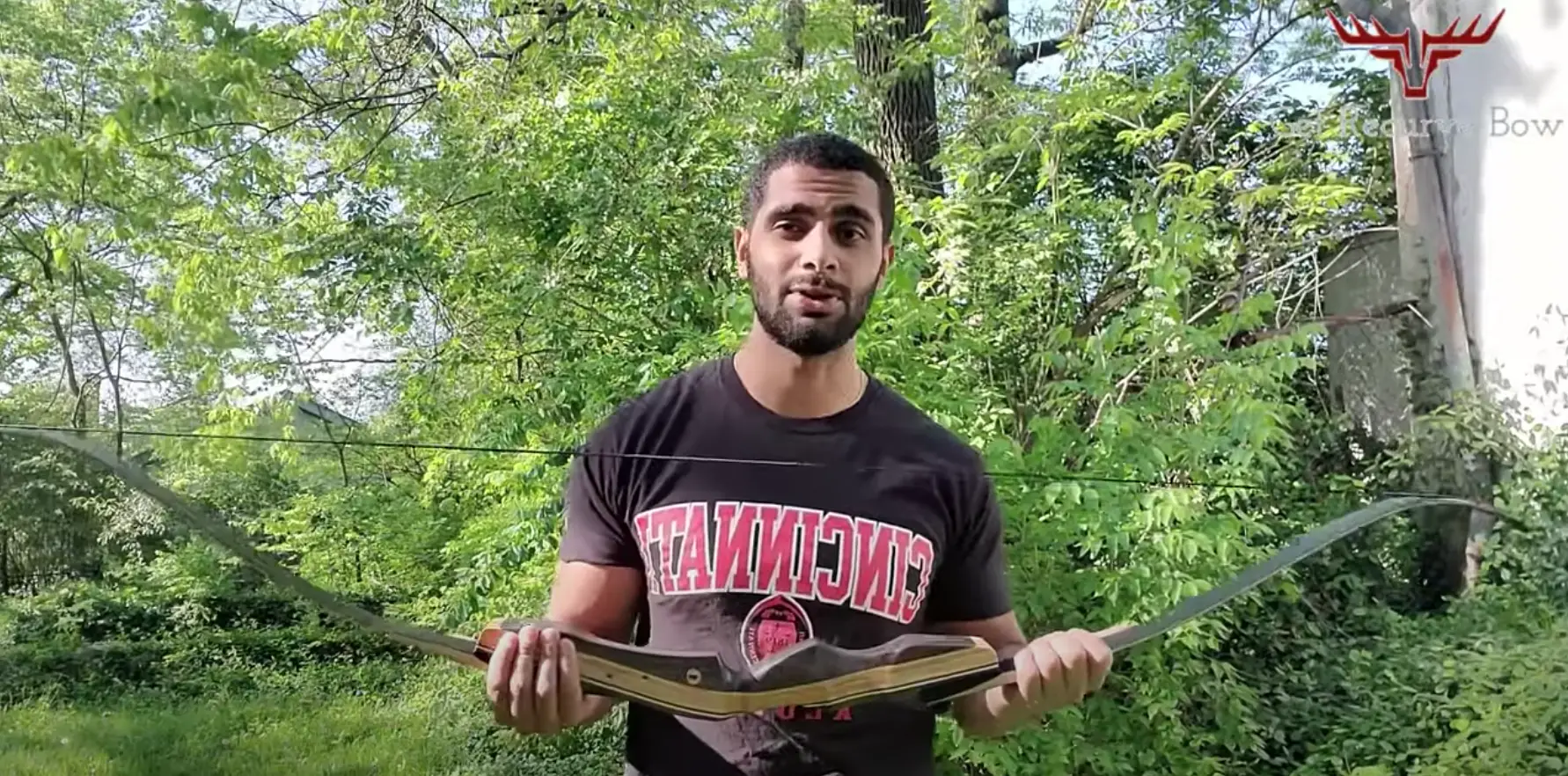
Archery is my hobby & I usually hunt and play on weekends and after work. It’s a passion since I was very young and I love writing about it as well to continuously learn more and share the love of archery with others!

